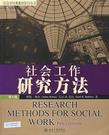社会工作研究方法
出版时间:2008-12 出版社:北京大学出版社 作者:阿伦·鲁宾 (Allen Rubin) 页数:668
Tag标签:无
内容概要
《社会工作研究方法》是由美国得克萨斯大学奥斯汀分校社会工作学院阿伦·鲁宾(AIIen Rubin)教授和加州查普曼大学社会学系艾尔.R.芭比(Earl R.Babbie)教授共同撰写的、出版多年并且经年热销的一本研究方法教科书。对许多社会工作专业学生来说,这是一本必读书。而在社会工作专业教师与研究者眼里,这又是一本案头必备的参考书。对那些试图全面、系统和熟练掌握社会工作研究方法与技巧的学生与专业工作者而言,《社会工作研究方法》一书具有非同凡响的参考价值。
作者简介
阿伦·鲁宾(Allen Rubin)美国得克萨斯大学奥斯汀分校社会工作学院教授。 艾尔.R.芭比(Ead.R.Babbie),美国加州查普曼大学社会学系教授。
书籍目录
PART 1An Introduction to Scientific Inquiry in Social WorkChapter 1 Why Study Research?Chapter 2 Evidence-Based PracticeChapter 3 Philosophy and Theory in Social Work ResearchPART 2The Ethical, Political, and Cultural Context of Social Work ResearchChapter 4 The Ethics and Politics of Social Work ResearchChapter 5 Culturally Competent ResearchPART 3Problem Formulation and MeasurementChapter 6 Problem FormulationChapter 7 Conceptualization and OperationalizationChapter 8 MeasurementChapter 9 Constructing Measurement InstrumentsPART 4Designs for Evaluating Programs and PracticeChapter 10 Causal Inference and Correlational DesignsChapter 11 Experimental DesignsChapter 12 Single-Case Evaluation DesignsChapter 13 Program EvaluationPART 5Data-Collection Methodswith Large Sources of DataChapter 14 SamplingChapter 15 Survey ResearchChapter 16 Analyzing Existing Data: Quantitative and Qualitative MethodsPART 6Qualitative Research MethodsChapter 17 Qualitative Research:General PrinciplesChapter 18 Qualitative Research:Specific MethodsChapter 19 Qualitative Data AnalysisPART 7Analysis of Quantitative DataChapter 20 Quantitative Data AnalysisChapter 21 Inferential Data Analysis: Part 1Chapter 22 Inferential Data Analysis: Part 2PART 8Writing Research Proposals and ReportsChapter 23 Writing Research Proposals and ReportsAppendix A Using the LibraryAppendix B Statistics for Estimating Sampling ErrorAppendix C Proportion under Normal Curve Exceeded by Effect-Size (ES)ValuesAppendix D Learners Guide to SPSS 11.0 for WindowsGlossaryBibliographyIndex
章节摘录
In this context, Abraham Kaplan (1964) distin-guishes three classes of things that scientists measure. The first class is direct observables: those things we can observe rather simply and directly, like the color of an apple or the check mark made in a questionnaire. The second class is indirect observables. If someone puts a check mark beside female in our questionnaire, then we can indirectly, observe that persons gender. Min- utes of agency board meetings provide indirect obser- vations of past agency actions. Finally, constructs are theoretical creations based on observations but which themselves cannot be observed directly or indirectly. Depression, then, is an abstraction-a construct that consists of a "family of conceptions" (Kaplan, 1964:49) that includes your concepts that constitute depression, our concepts that make it up, and the conceptions of all those who have ever used the term. It cannot be observed directly or indirectly, because it doesnt exist. We made it up. All we can measure are the direct observables and indirect observables that we think the term depression implies. IQ is another example. It is constructed mathematically from ob- servations of the answers given to a large number of questions on an IQ test. Later in this chapter well discuss sources of existing scales that measure such things as social adjustment, marital satisfaction, and family risk of child abuse. These are further examples of constructs. Conceptualization Day-to-day communication usually occurs through a system of vague and general agreements about the use of terms. Usually, people do not understand exactly what we wish to communicate, but they get the gen- eral drift of our meaning. Conceptualization is the process through which we specify precisely what we will mean when we use particular terms. Suppose we want to find out, for example, whether women are more compassionate than men. We cant meaning- fully study the question, let alone agree on the answer, without some precise working agreements about the meaning of the term compassion. They are working agreements in the sense that they allow us to work on the question. We dont need to agree or even pre- tend to agree that a particular specification might be worth using.
图书封面
图书标签Tags
无
评论、评分、阅读与下载
